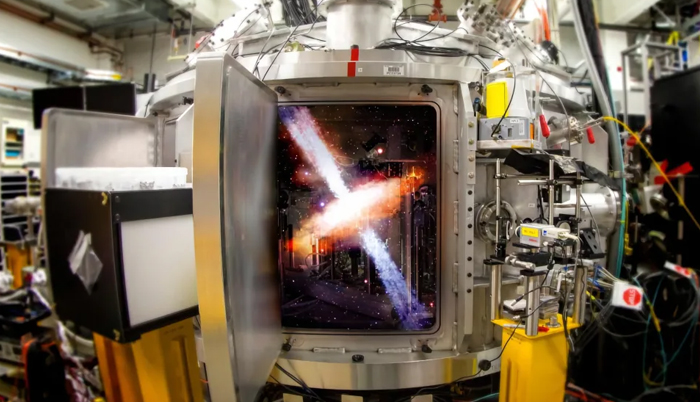![]() Home > Space & Science
Home > Space & Science
Stanford’s Upgraded X-Ray Laser Is Up And Running

SLAC
![]() September 19th, 2023 | 11:52 AM |
September 19th, 2023 | 11:52 AM | ![]() 639 views
639 views
SPACE
The LCLS-II can enable unprecedented research into ‘atomic-scale, ultrafast phenomena.’
The newly
The newly upgraded particle accelerator at the DoE’s Stanford Linear Accelerator Center (SLAC) has produced its first X-rays. The Linac Coherent Light Source (LCLS) upgrade, LCLS-II, can emit up to a million X-ray pulses per second (8,000 times more than the original) and an almost continuous beam 10,000 times brighter than its predecessor. Researchers believe it will enable unprecedented research into “atomic-scale, ultrafast phenomena” and shed new light on quantum computing, communications, clean energy and medicine.
One of the keys to the accelerator’s powerful upgrade is its cooling abilities. The original LCLS, which went online in 2009, was capped at 120 pulses per second because of the natural limits of how many electrons could simultaneously travel through the accelerator’s room-temperature copper pipes. But the updated version includes 37 cryogenic modules cooled to negative 456 degrees Fahrenheit (colder than outer space), allowing it to “boost electrons to high energies with nearly zero energy loss.” The new accelerator will work in parallel with the existing copper one.
SLAC researchers say the new capabilities will allow them to examine details of quantum materials with unprecedented resolution while enabling new forms of quantum computing and “reveal unpredictable and fleeting chemical events” to help advance clean energy tech. In addition, they say it could help scientists develop new pharmaceuticals by studying how biological molecules work on an unprecedented scale. Finally, they stated that its unmatched 8,000 flashes per second will “open up entirely new fields of scientific investigation.”
SLAC researchers began
SLAC researchers began envisioning upgrades to the original LCLS in 2010. The project has since gone through $1.1 billion and has involved “thousands of scientists, engineers, and technicians across DOE, as well as numerous institutional partners.” It required numerous “cutting-edge components,” including a new electron source, two cryoplants to produce refrigerant and two new undulators to generate X-rays from the beam. Multiple institutions contributed to the endeavor, including five US national labs (Lawrence Berkeley National Laboratory and Argonne National Laboratory, among others) and Cornell University.
“Experiments in each of these areas are set to begin in the coming weeks and months, attracting thousands of researchers from across the nation and around the world,” said LCLS Director Mike Dunne. “DOE user facilities such as LCLS are provided at no cost to the users — we select on the basis of the most important and impactful science. LCLS-II is going to drive a revolution across many academic and industrial sectors. I look forward to the onslaught of new ideas — this is the essence of why national labs exist.”
Source:
courtesy of ENGADGET
by Will Shanklin
If you have any stories or news that you would like to share with the global online community, please feel free to share it with us by contacting us directly at [email protected]